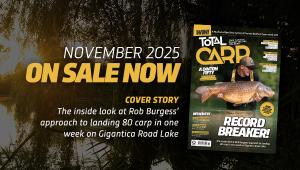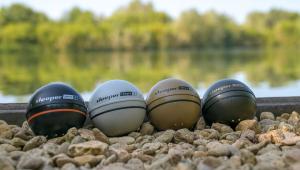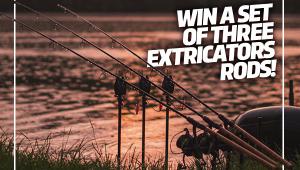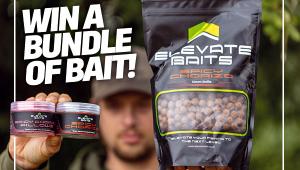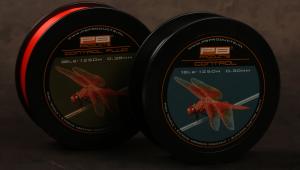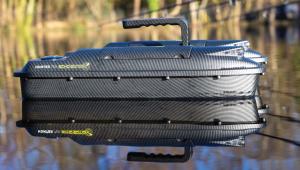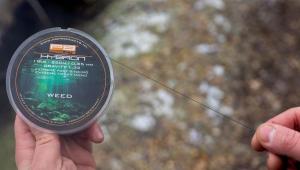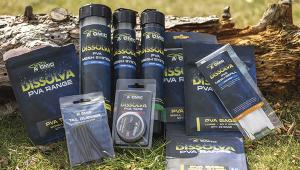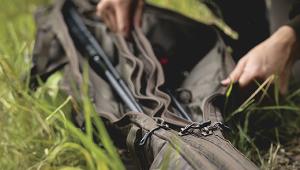Mobility Is Key
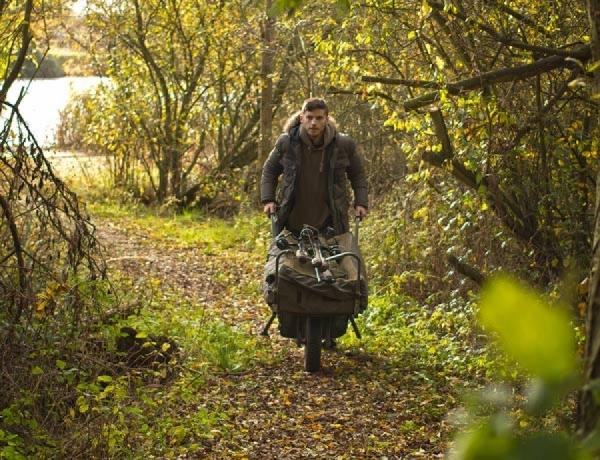
Tie your bags, grab your barrow and go find them. Taska’s KIERAN LACK shows you why keeping on the move with PVA really can pay off.
As winter increases its icy grip on the UK’s waters, it’s easy to see how anglers fall into the trap of staying static. It’s cold, often wet and it can be hard work. Once you’re warm and comfortable in your bivvy, moving swims is the last things you fancy doing.
However, if you want fish, that’s exactly the mindset you should be adopting. Travelling light, applying your watercraft and getting on your toes to try new areas can pay off massively in winter.
This is down to how fish behave at this time of year. In summer the carp are charged up by the warmth, on the hunt for food and more likely to come to you. In winter they slow down as the temps fall, they’ll move about less and huddle together in areas offering a steadier, more comfortable temperature. So if you want to catch them, it’s up to you to go and find them.
Mobility is key to locating fish, but you also have to adapt your tactics to suit. One angler who loves this kind of winter approach is Taska’s Kieran Lack, who bases his pursuit of cold-water carp around PVA.
Delivering a small, hotspot of food in a neat, dissolvable package, PVA bags and mesh are all about fishing for a bite at a time. You’re not looking to create a large, baited area to draw fish in, but, working on the principle that you’ve found the fish, you’re casting out a single portion of food laced with a hook to land near where they already are and get them to just take a couple of mouthfuls.
To find out more about how Kieran puts this active PVA fishing into practice Total Carp caught up with him at the day-ticket water of Essex’s Oak Lakes. Top of the agenda before anything else – find the fish.
This is all about watercraft, with Kieran having a look around the lake in search of any signs before anything else.
“At this time of year water temperature plays a big part in where the carp will be,” he tells us. “The sun’s out and the air temperature isn’t too bad, so the top of the water might warm by a few degrees. The wind’s pushing that slightly warmer water down to one end of the lake and into a small bay, so that’s where I’ll have a look first.”
What Kieran also does as he’s looking around is bait up swims he thinks are likely to hold fish - more about that later.
Moving with little tackle we head for a swim that gives Kieran two areas to target. The first a deep section tight to a steep bank that the wind’s pushing directly onto. The second is a small bay separated from the main lake by a bridge.
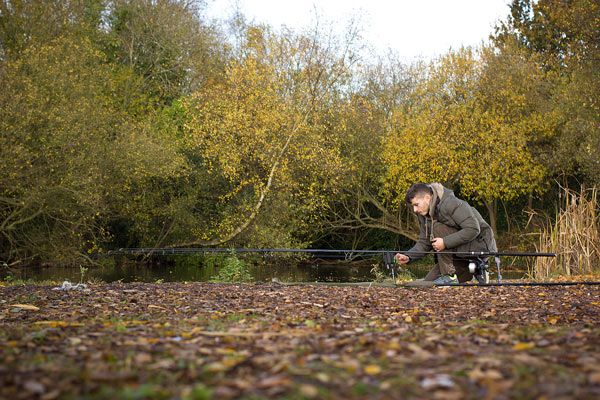
You might not get many chances in winter so make sure your setup is spot on
With the gear in the swim, within 10 minutes our boy’s fishing!
“Preparation’s what it’s all about with PVA,” says Kieran. “I tie up solid and mesh bags at home using my winter bag mix. Each of the solid bags has its own rig already in it, connected to a leader. All I have to do is tie the main line on to the loop and I’m ready.”
Before he ties on the bags, Kieran uses a lead to have a quick look around and work out his range.
The ingredients
Kieran creates three bags – one solid, two mesh – with different ingredients.
Half of both mesh parcels contain crumbed Nutrabait Cream Cajouser boilies, with the other differing, one containing Nutrabaits Trigga Ice Bag mix and mixed size pellets (1, 2, 3 and 4mm – Keiran mixes 4kg of pellets to 1kg of bag mix) all soaked in Nutrabaits liquid Trigga and Krill. The other bag is half filled with a nut mix. Kieran goes for different options so he can change things if needed.
At this time of year, it’s important to think about the bait you’re putting in and how it works in the cooler water. Low-oil pellets means no congealing and too much oil and liquid means it will take the PVA longer to break down, something Kieran doesn’t want.
Each rod that’s gone out has carried solid bags – two in the main lake, the other in the back bay. A solid bag holds more bait so fishes well on it’s own in an otherwise unbaited area. Kieran will also fish PVA mesh bags, but only in swims, he’s prepped with bait beforehand.
“When I looked around I prepped a few spots, hand feeding dead red maggots, mixed pellets and boilies. If there are carp in these areas they should move onto the bait by the time I move around to them. A PVA mesh bag holds less than a solid one, so is perfect for setting up my hook bait over a small clump of feed within that baited zone.”
Mesh V Solid Bags
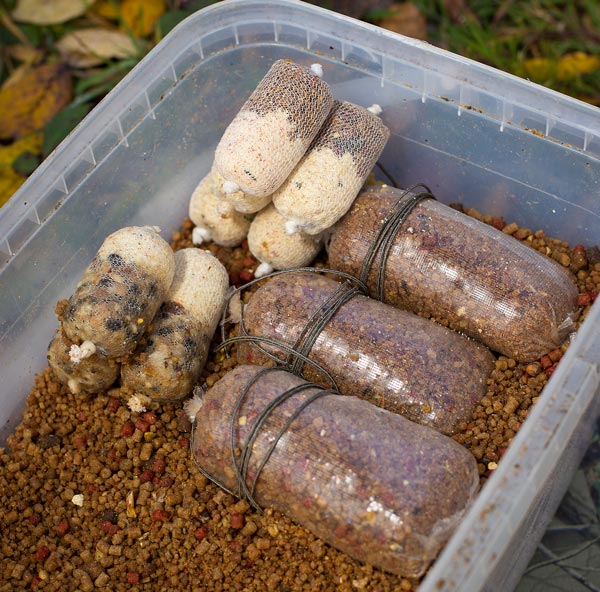
Mesh
For small nuggets of feed, Kieran uses PVA mesh to deliver a compact bit of feed containing his hook bait over a spot that’s already been primed with feed. The bag is slid down the hook link and up to the hook to ensure both hook bait and feed sit together on the bottom.
Solid Bag
A solid bag holds a surprising amount of feed and creates a hotspot of its own that needs no further feeding. These bags work by carrying your feed and rig, delivering the whole package out and down to the deck before dissolving to leave the perfect parcel of bait for an unwary carp to trip up on.
With three bags out and fishing, Kieran takes the time to replace the solid bags he’s used. If he suddenly hits a pocket of fish the action could be frantic, and the last thing you want to do is run out of bags and waste fishing time tying more up.
Just as the last bag’s finished, Kieran’s right-hand rod in the main lake sings out. There are fish in the area. Sitting there in silence, willing a run, it’s not long before we get what we’re after, the alarm blipping before it becomes a single tone. Kieran’s up and on it, lifting into what looks like a good fish. He uses a 3.5lb-test-curve rod for bag fishing because he’s casting a large weight and the increased power gives him more control on the cast.
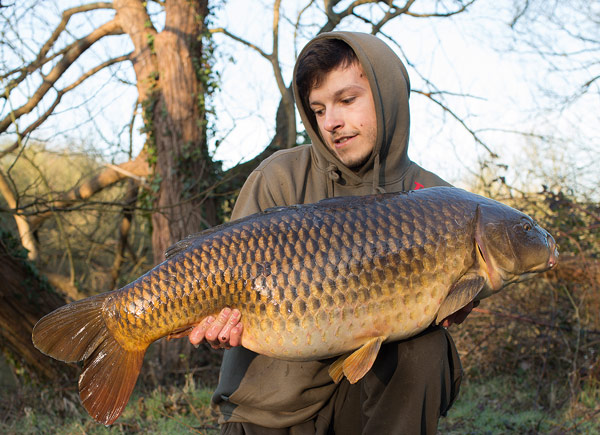
Caught on exactly the same tactics in similar conditions, this common fell for the mobile PVA approach.
The Rig - With a PVA mesh parcel you can pretty much fish any rig, but with your solid bag you need to be smart about things. Kieran goes for a short link of between three and four inches created from a soft, uncoated material - Kryston Merlin - so that it doesn't kink while stored in the bag and affect how it lies on the lake bed. To ensure the rig sits flat, Kieran adds Kryston Heavy Metal Extra putty to pin it down, while a curved-shank size 6 hook holds a Mini Big Eyed Swivel locked in by a hook bead to play host to a wafter boilie.
Within seconds, though, it’s obvious that something’s wrong. Nothing’s moving, the line stuck fast on some immovable obstacle. He moves for a better angle but in vain and is soon pulls for a break, the carp long gone.
We stick it out in the same area for another half-hour but with no more signs, we’re soon on the move.
The major factor here is that the sun’s gone in. As it does, the wind picks up and the temperature drops.
“If you were a carp you’d be moving on to find a more comfortable temperature because that water being blown down this end will be getting colder and dropping the temperature at this end. We need to work out where they’re likely to be now.”
We put our bets on a calmer area at the other end of the lake. Sheltered from the wind, Kieran’s already primed a few spots there and it looks good for a bite.
Rocking up to the first swim, a mesh parcel’s positioned on the rig and underarm cast into place. The same goes for the second rod, while the third sees a solid bag deployed tight to a reed bed.
A very slow hour follows with no action. What it does do is highlight how important keeping on the move is, with this section of the lake obviously devoid of fish – but they have to be somewhere.
We move on, slipping into a spot at the same end but on the opposite side. The light level’s dropping, as is the air temperature; this could well be bite time.
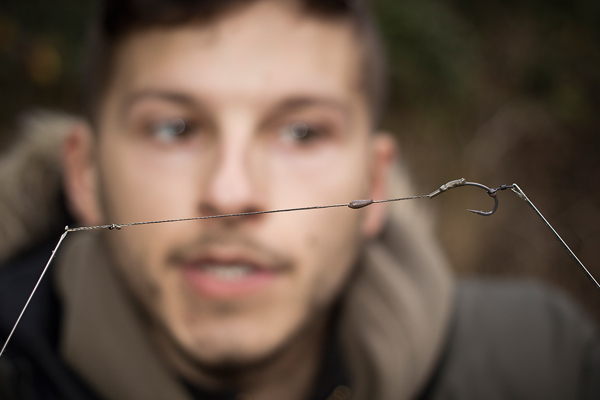
Kieran's bag rig is specifically designed for the task.
Again Kieran puts two of his rods over prebaited spots with mesh and the third with a bag tight to a reed bed towards the middle of the water. As the third rod’s cast, we see a carp ‘bosh’ out down the margin near where Kieran has just cast his right-hand rod – expectations are high.
Another 20 minutes pass and nothing before the silence is pierced by a blast from that right-hand rod. On it in a flash, Kieran’s soon playing a fish, bullying it into open water. Once there it’s game over and it’s soon in the net.
As Kieran proudly shows off his prize it’s an example of the power of stretching your legs and covering water. If he’d stayed put we almost guarantee we’d have ended the day biteless. So tie up your bags, break out the barrow and get on your toes this winter, you won’t regret it.
Angler File -
Name: Kieran Lack
Age: 21
UK PB: 39lb 12oz
Occupation: Sales manager
Sponsors: Taska, Nutrabaits, Kryston
Step-By-Step
PVA Solid Bag
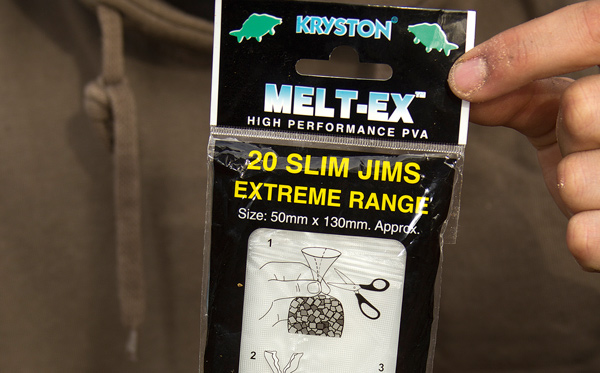
1. Firstly you need to select a PVA bag. Kieran favours the Milt-ex Slim jims from Kryston.
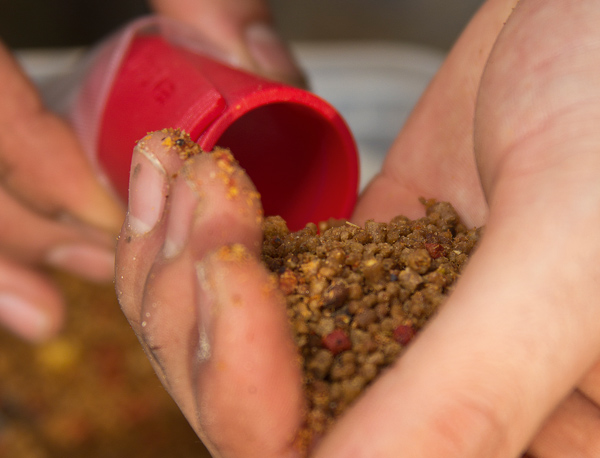
2. Start by adding your bag and pellet mix, enough to create a small layer at the bottom of the bag.
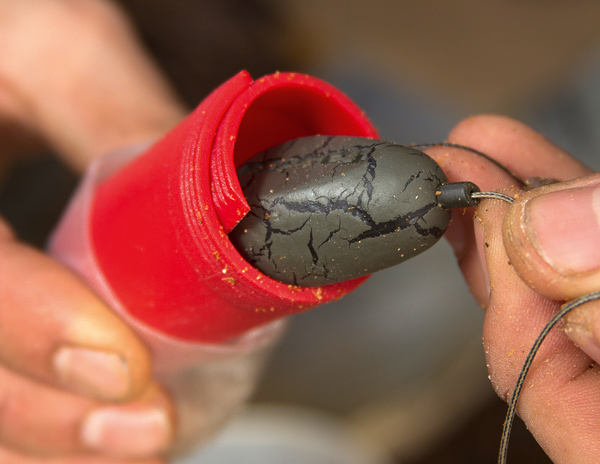
3. Now gently place your lead into the bag. Use your finger to push it into the mix so that it sits straight and centrally.
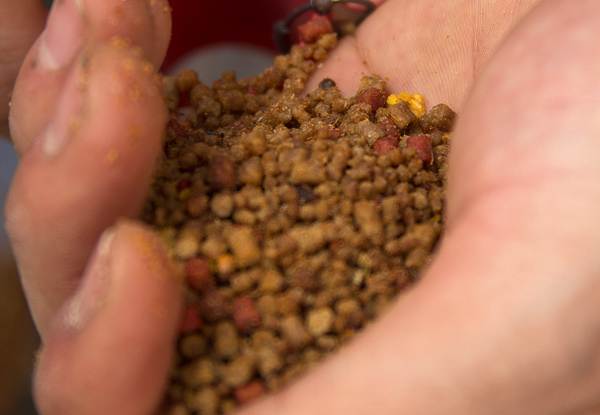
4. With your hook hanging over the edge of the loader, fill the rest of the bag with mix.
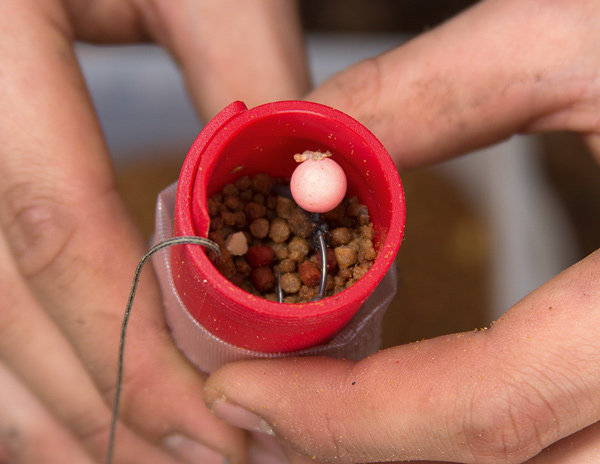
5. With the bag now filled to the appropriate level, place your hook and hook bait into the top.
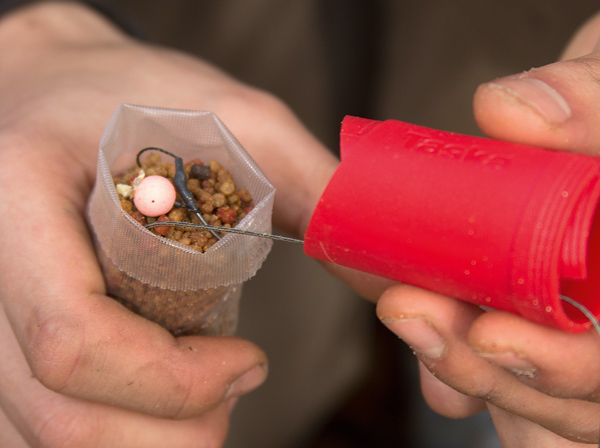
6. Next, remove the loader. Do the carefully so that you do not spill any of your feed.
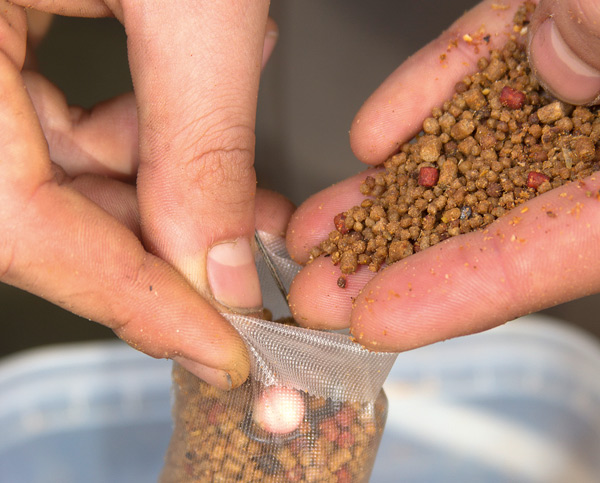
7. A little extra feed is then added to ensure that the hook and hook bait are both covered.
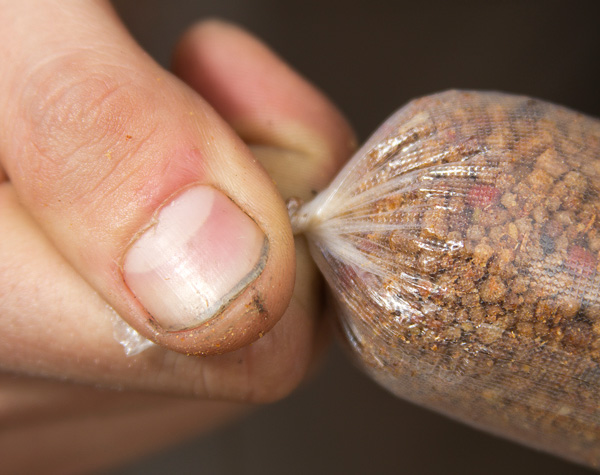
8. Pinch the top of the bag and twist to tighten it up. Your leader will still be hanging out of it.
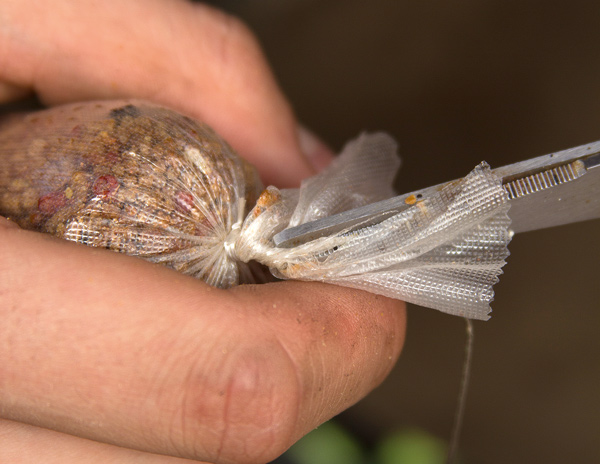
9. Cut off a length of PVA string and tie two overhand knots round the neck of the bag. Now trim down the collar of the bag.
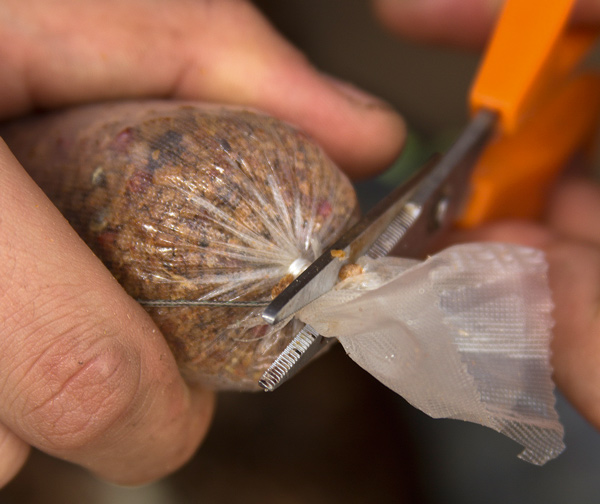
10. Being careful to avoid the rig leader, now trim the rest of the bag collar from the top with scissors.
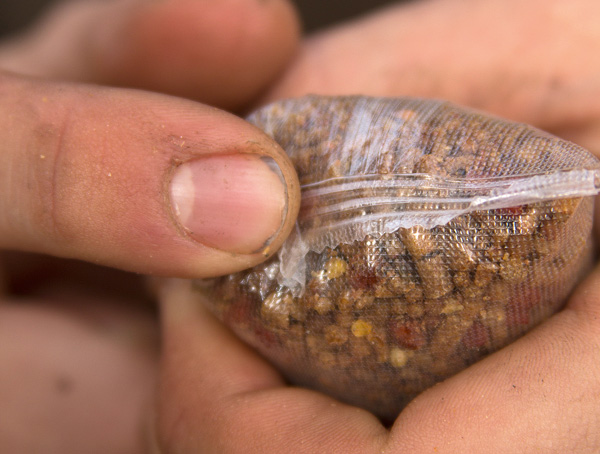
11. Lick each corner at the bottom of the bag and push down until they stick, giving a more aerodynamic shape for casting.
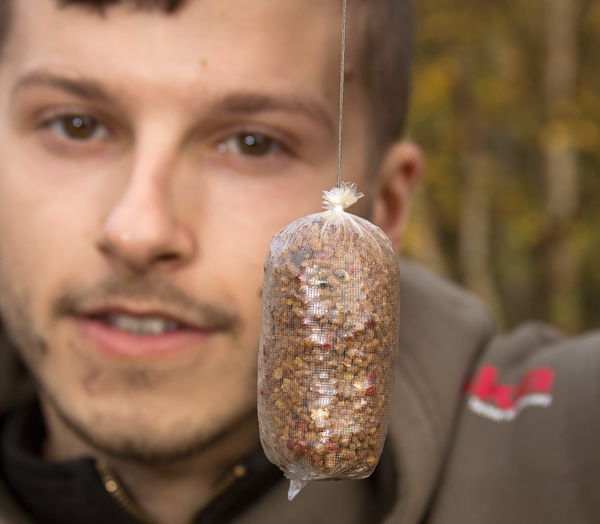
12. Your finished bag will have your leader hanging from the top, your rig inside and be nice and tight.
Step-by-step
Mesh
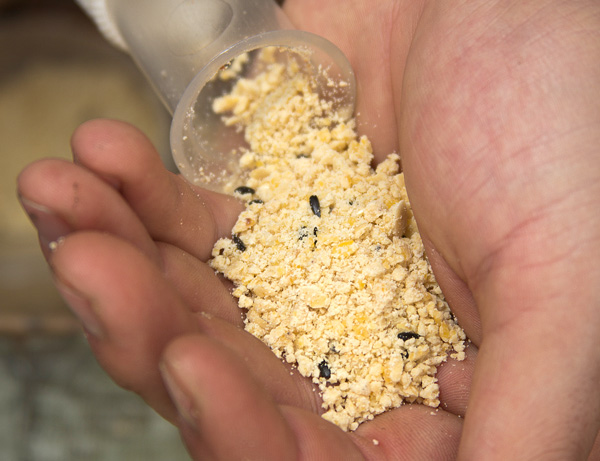
1. With your PVA mesh ready on the loader put in two or three crushed boilies to begin with.
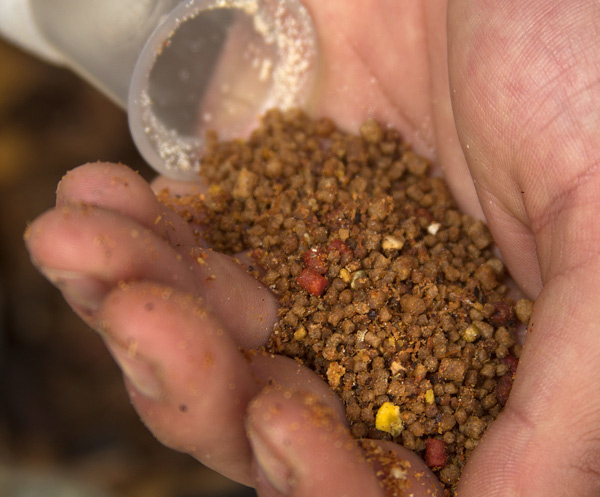
2. Following this, roughly the same amount of your bag mix is now added to the concoction.
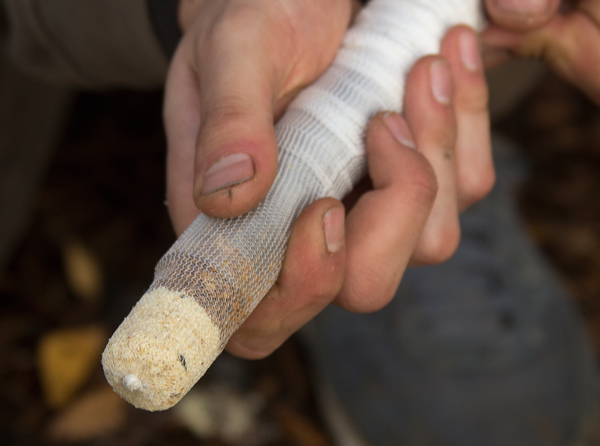
3. Use your plunger to push the bait into your mesh so it will be nice and compact.
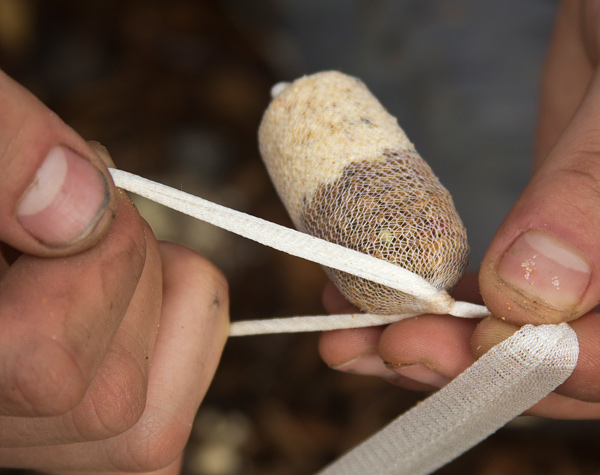
4. Make sure the parcel tight. Twist the mesh if needed to tighten further and tie an overhand knot at top.
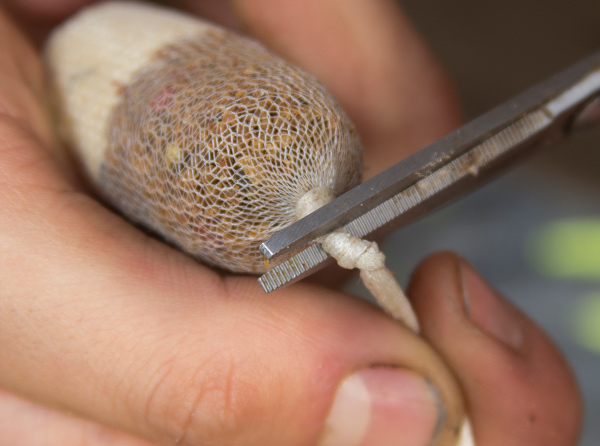
5. Now tie a second knot next to the first, leaving a small gap. This will be the bottom of your next mesh parcel.
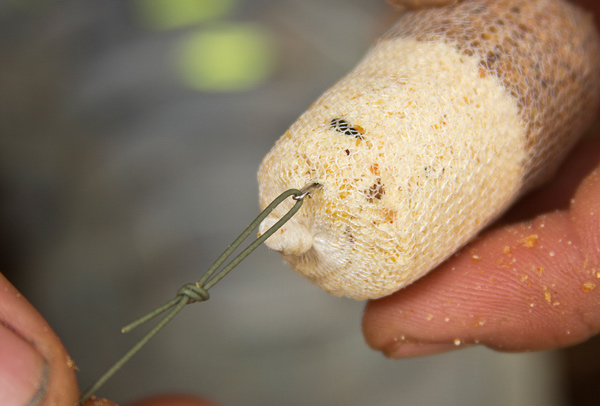
6. Push a latch-gate baiting needle through the length of the parcel and attach the loop end of your rig.
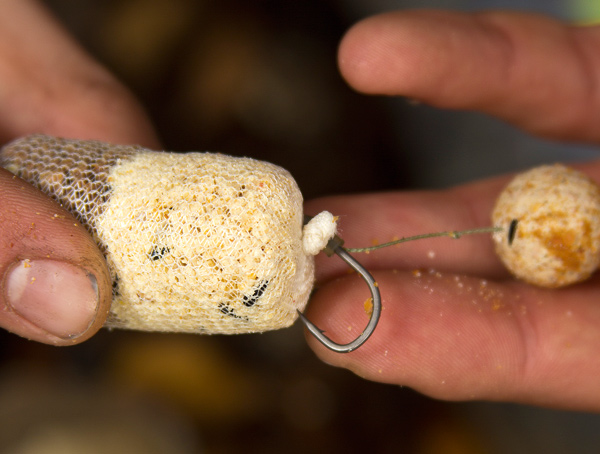
7. Pull the rig through the mesh parcel and push the parcel down to the hook, so your feed sits next to your hook bait.
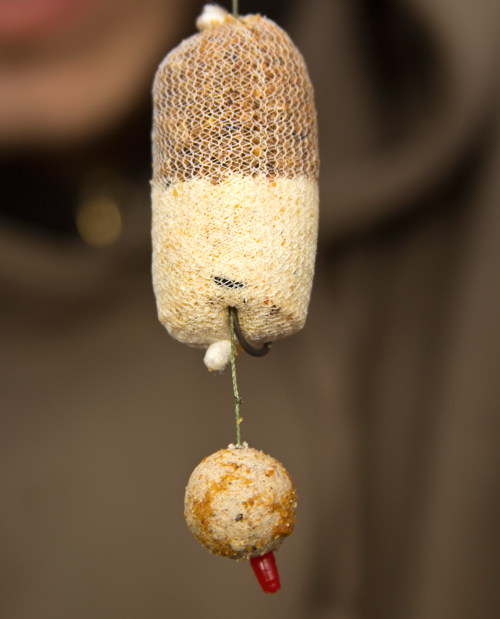
8. To finish off, make sure your hook point inserts into the bottom of the bag. You're now ready to cast.
Be in the know, subscribe to TC
- Log in or register to post comments



